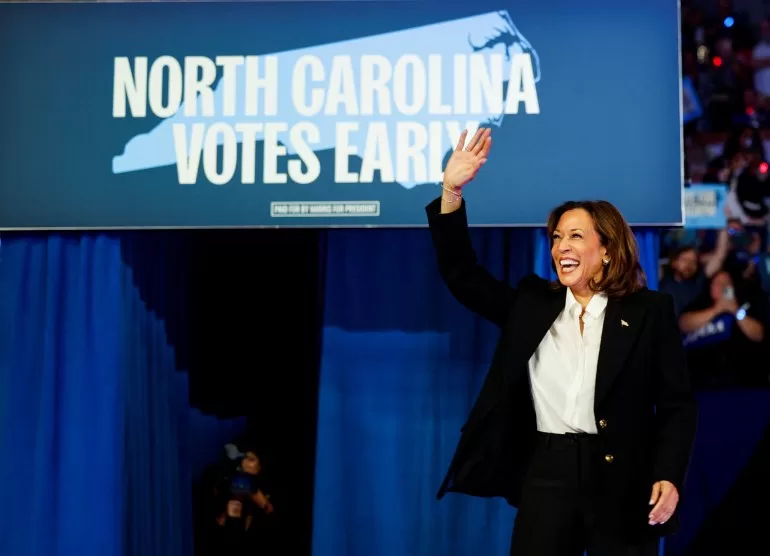About 20 years ago, in the early 2000s, Paul Shumaker’s party began experiencing a troubling trend.
Shumaker, a Republican operative with a classic Carolinian drawl, laid it out for Al Jazeera in stark terms: Republican registration started declining, while the number of “unaffiliated” voters gradually rose.
“Now there are no liberal Republicans left, and there are fewer moderate Republicans, too,” Shumaker said.
He shared data showing how both major parties, Republicans and Democrats, have, in total, invested more than $147m in the state over the last 10 years — but even that couldn’t stop an “explosion” of unaffiliated voters, who are now the clear majority.
Of the 8.5 million voters in North Carolina this year, approximately 38 percent are registered as “unaffiliated”. That dwarfs the 32 percent who identify as Democrat and the 30 percent who say they’re Republican.
This explosion of “unaffiliated” voters dovetails with larger demographic trends showing Americans bucking traditional party labels, adding to the unpredictability of elections.
However, that doesn’t mean “unaffiliated” voters will opt for a third-party candidate. Surveys have shown that the majority of independent voters do, in fact, “lean” consistently towards either the Republican side or the Democrats.
Which is to say, they’re very much up for grabs — and in demand — by the two major parties.
“Neither party can win without building a coalition for unaffiliated voters,” Shumaker said.
Republicans, he explained, need to appeal to unaffiliated voters in the suburbs and cities — two areas Democrats are expected to win.

Democrats, meanwhile, are hoping to use “unaffiliated” voters to compensate for losses in their base. More than 2.4 million people in North Carolina registered as Democrat as of October 26 — down from more than 2.6 million at around the same point in the 2020 election cycle.
Party strategists like Jackson hope to make up the loss by appealing to voters in left-wing strongholds — typically urban centres — while holding ground in rural areas.
After all, North Carolina has the largest rural population in the US after Texas.
“People often say you have to lose by less in the rural areas, but that’s not true: You just have to stop the bleeding,” Jackson said. “If Kamala Harris holds [outgoing President] Joe Biden’s margins, she could have a shot.”
Mac McCorkle, a Democratic political consultant with a cheery, amiable aura, refers to unaffiliated voters as “precious” to his party. He believes only a small number of voters will decide whether North Carolina backs Harris or Trump.
“It’s not like 20 percent of the electorate can go either way,” he said. “We’re talking about a race that’ll be decided by one, two, three percent.”
